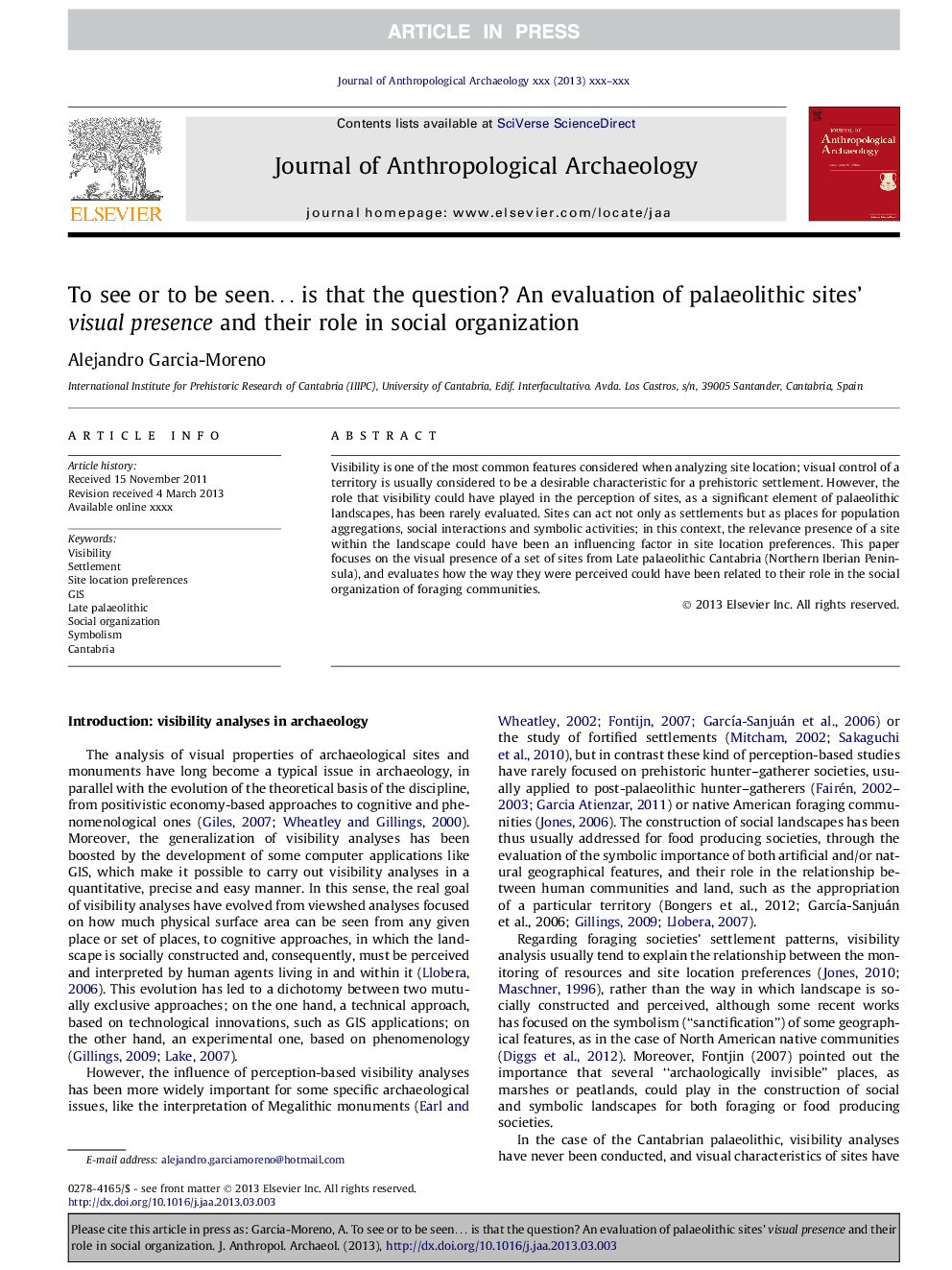| Article ID | Journal | Published Year | Pages | File Type |
|---|---|---|---|---|
| 10498718 | Journal of Anthropological Archaeology | 2013 | 12 Pages |
Abstract
Visibility is one of the most common features considered when analyzing site location; visual control of a territory is usually considered to be a desirable characteristic for a prehistoric settlement. However, the role that visibility could have played in the perception of sites, as a significant element of palaeolithic landscapes, has been rarely evaluated. Sites can act not only as settlements but as places for population aggregations, social interactions and symbolic activities; in this context, the relevance presence of a site within the landscape could have been an influencing factor in site location preferences. This paper focuses on the visual presence of a set of sites from Late palaeolithic Cantabria (Northern Iberian Peninsula), and evaluates how the way they were perceived could have been related to their role in the social organization of foraging communities.
Related Topics
Social Sciences and Humanities
Arts and Humanities
History
Authors
Alejandro Garcia-Moreno,
